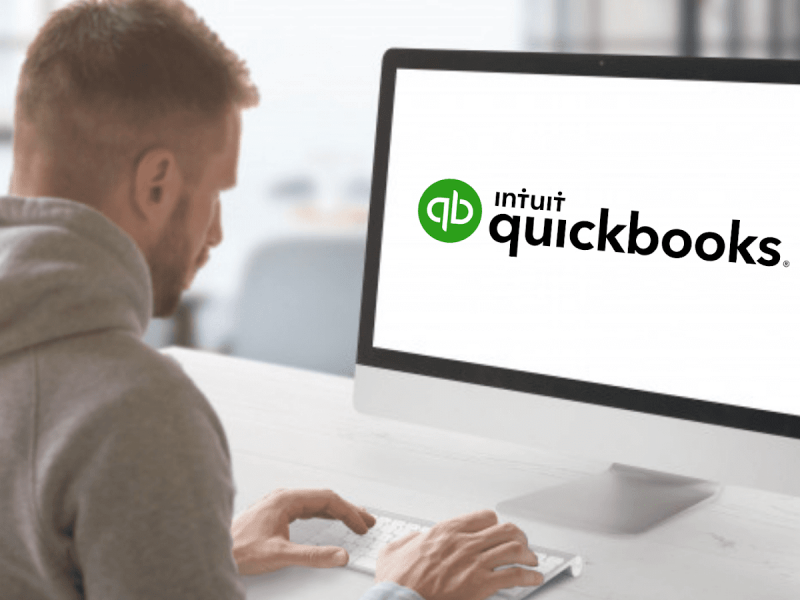Most business decisions happen in a fog of uncertainty. Markets shift, competitors strike, supply chains break down. Without solid economic frameworks, companies end up making costly guesses instead of informed choices.
Here’s what’s interesting about economic models—they’re simultaneously incredibly sophisticated and surprisingly practical. Sure, you’ve got your elasticity coefficients and game theory matrices that look intimidating enough to clear a boardroom. But strip away the academic jargon, and these tools do something simple: they turn chaos into patterns you can genuinely use.
That shift—from guessing in the dark to spotting patterns—sets the stage for seeing how these tools become true strategic compasses.
For example, consider a national grocer calculating demand elasticity for weekly promotions. They’re not just throwing discounts at the wall anymore. They know exactly how much to cut prices without destroying their margins. A manufacturer runs probabilistic supply chain models and adjusts orders before disruptions hit. Tech companies use sequential-move game theory to anticipate competitors’ price cuts and launch their own counteroffers first.
The difference between reacting and predicting? That’s where real money gets made or lost.
Strategic Compasses
Savvy firms don’t just collect data—they use economic tools to make sense of it. Elasticity, behavioral economics, game theory, macroeconomic indicators, and risk models become the foundation for strategic thinking.
Four patterns keep showing up: companies master demand through elasticity and behavioral insights. They gain competitive edge with game theory and network effects. They time market moves using macroeconomic signals. And they build analytical capabilities through advanced economic education.
These aren’t separate tactics. They work together to create a complete strategic framework that turns uncertainty into opportunity.
But even the sharpest compasses can’t rescue you when gut instinct takes the wheel.
When Intuition Fails
Business intuition has this nasty habit of failing at the worst possible moments. You know the feeling—everything seems obvious until the quarterly results come in and you’re staring at numbers that make no sense.
That national grocer learned this the hard way. They slashed prices across the board, expecting volume to surge. Instead, profit margins dropped 8 percent while sales barely budged. Turns out their gut seriously underestimated how price-sensitive their customers actually were. An electronics firm carried millions in unsold inventory because their sales forecasts missed an emerging downturn entirely.
Classic case of wishful thinking masquerading as market analysis.
Supply chains offer their own special brand of chaos. Manufacturers who don’t model disruption risks get blindsided when key suppliers go dark. Production grinds to a halt, and suddenly everyone’s scrambling to explain why nobody saw it coming.
Tech firms aren’t immune either. Nothing quite matches the panic of watching a competitor cut prices while your own pricing strategy assumes they’ll hold steady. Without game-theoretic modeling, these moves feel like lightning strikes—random, devastating, and unpredictable.
With intuition exposed at its worst, it’s time to see how price psychology fills the gap.
Mastering Demand
Price elasticity isn’t just academic theory—it’s the difference between profitable growth and margin suicide. When you know exactly how customers respond to price changes, you can optimize revenue without destroying profitability.
One practical way teams quantify those responses is through survey-based techniques that measure willingness to pay across discrete price points. The Gabor–Granger approach, for example, asks respondents whether they would purchase at a sequence of prices and uses those answers to model demand curves and identify revenue-maximizing price points. For teams seeking a straightforward implementation, Conjointly’s Gabor Granger Pricing Method produces actionable outputs such as price elasticity estimates and revenue-versus-price charts. That kind of clarity helps decide whether to deepen a promotion, hold a premium, or test incremental price moves with minimal risk.
That national grocer we mentioned? They calculate elasticity coefficients for every product category before setting weekly discounts. No more guessing whether a 15 percent cut will drive enough volume to offset the margin hit.
Behavioral economics adds another layer of precision. Loss aversion means customers hate losing something more than they enjoy gaining it. That’s why “avoid this fee” works better than “get this discount”—even when the dollar amounts are identical. Anchoring lets you set reference points, like showing premium options first so mid-tier products look reasonable. Framing turns routine promotions into exclusive opportunities that feel urgent.
The magic happens when you combine elasticity curves with behavioral biases. Demand doesn’t just shift with price—it shifts with context, timing, and how you present choices.
While price moves untangle one knot, anticipating rivals demands another level of clarity.
Competitive Intelligence
Game theory sounds academic until you’re trying to figure out what your biggest competitor will do next quarter. Then it becomes the most practical tool in your arsenal.
Sequential-move models help you think three steps ahead. When a smartphone manufacturer launches a new handset, rivals don’t just react. They’ve already mapped out the likely responses and counter-responses. Price cuts, feature upgrades, marketing blitzes—each move triggers a predictable chain reaction if you know how to model it properly.
Payoff matrices make this concrete. You map every strategic combination and assign profit estimates to each scenario. The tricky part? Making realistic assumptions about what drives your competitors’ decisions. Get that wrong, and your beautiful model becomes expensive fiction.
Platform businesses have their own game to play with network effects. There’s usually a critical mass where user growth accelerates dramatically. Time your investments right, and you ride that wave. Miss it, and you’re stuck fighting uphill battles while someone else owns the market.
After mapping competitive moves, you still need the macro view to know when to strike.
Reading Economic Signals
Macroeconomic data shows you where markets are heading before your customers catch on. GDP growth, consumer confidence, interest rates—these aren’t abstract numbers for economists to debate. They’re your early warning system for spotting business opportunities.
Smart companies don’t just track these indicators. They build composite signals that reliably guide major decisions. Take that consumer electronics maker who delays regional rollouts until disposable income indicators show rising purchasing power. Or the fashion retailer tracking consumer confidence to time seasonal collections, releasing new lines as spending sentiment climbs. Automotive firms monitor GDP growth and unemployment in key markets to calibrate production plans. Nobody wants to explain why they’re sitting on inventory when the data clearly showed a downturn coming.
Here’s what matters: blending multiple indicators instead of betting everything on one signal. Economic data gets noisy. But patterns become clear when you look at the bigger picture.
But what good is perfect timing if your supply chain collapses? That’s where resilience models step in.
Building Resilient Supply Chains
Supply chain disruptions have this delightful way of happening at the absolute worst possible moment. Just when you’ve optimized everything for maximum efficiency, some supplier you’ve never heard of in a country you can’t pronounce decides to have a crisis.
Probabilistic risk modeling won’t prevent these disasters. But it’ll help you survive them. You map supplier default probabilities, model logistics disruption scenarios, and build safety stock levels that balance cost with reliability. It’s like insurance—expensive until you need it, then suddenly priceless.
ERP systems make this manageable by embedding risk distributions directly into inventory planning. Instead of carrying the same safety stock everywhere, you adjust levels based on actual risk profiles. High-risk suppliers get bigger buffers. Stable ones get leaner inventory.
The trade-off between efficiency and resilience never goes away. But quantitative frameworks help you make that choice deliberately instead of discovering your vulnerability during the next crisis.
Of course, frameworks don’t wield themselves—you need people who know how.
Developing Analytical Skills
Advanced economic education programs like IB Economics HL train students to think strategically about business problems. These programs teach students to derive elasticity curves, construct game theory matrices, and analyze macroeconomic data in real time.
Students who complete IB Economics HL enter the workforce with practical modeling skills. They’ve tackled case studies that require interpreting elasticity curves for pricing strategy. They’ve built game theory matrices to forecast competitor moves. They’ve combined macroeconomic data into expansion signals.
The program doesn’t stop at theory. Supply chain risk simulations and behavioral pricing exercises teach students to apply probabilistic models and psychological insights to actual business challenges. This hands-on training connects theoretical knowledge with practical application in ways that matter.
Unlike broad MBA programs, focused economic education produces graduates with deeper strategic modeling capabilities. These analytical skills become increasingly valuable as markets grow more complex and competitive pressures intensify.
Once models are in expert hands, the next question is how to measure real-world impact.
Measuring Performance Improvements
Economic frameworks deliver measurable results in forecasting accuracy, resource allocation, and risk management. Companies track metrics like reduced variance between predicted and actual sales, tighter working capital ratios, and improved inventory turnover.
These operational improvements translate into higher returns on invested capital and stronger growth trajectories. With more efficient resource allocation and proactive risk mitigation, performance gains compound over time.
As one company tightens its sails, the wake reshapes entire markets.
The benefits extend beyond individual companies. As more firms adopt rigorous economic methods, entire markets become more efficient. Price signals improve. Resources flow to higher-return projects, and innovation cycles accelerate.
Market Efficiency Gains
When economic strategy tools spread across entire industries, something interesting happens. Dynamic pricing starts reflecting actual demand instead of guesswork. Companies waste less inventory while customers face fewer shortages. Capital doesn’t sit around waiting for someone to notice a good opportunity—it moves toward high-return projects at speeds that would’ve seemed impossible just a few years back.
This creates a snowball effect that’s hard to ignore. Better price signals mean resources get allocated more efficiently. Efficient allocation fuels innovation. Innovation opens up new strategic opportunities. The cycle keeps feeding itself.
Look, economic tools aren’t replacing human judgment here. They’re making it sharper. Data quality problems and unpredictable human behavior will always throw curveballs. But when the stakes are high and there’s no room for mistakes, structured analysis consistently outperforms gut instinct.
Yet even a sweeping tide of efficiency can’t clear the fog on its own—your decisions still count.
Strategic Clarity in Uncertain Times
Remember that fog of uncertainty we started with? Economic frameworks don’t eliminate it. They give you better ways to see through it. Instead of navigating blindly, you’ve got instruments that work even when visibility drops to zero.
The companies thriving in today’s markets aren’t necessarily the ones with the biggest budgets or the flashiest technology. They’re the ones making better decisions faster. They use tools that turn complexity into competitive advantage.
So when your next major strategic fork appears, will you trust gut instinct or economic analysis? That choice could mean reading about disruption—or making it.



